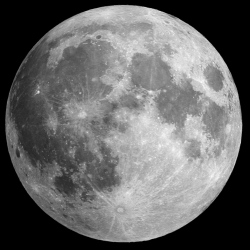
After the discovery of water on the moon, it’s now thought there’s somewhere in the neighborhood of a billion tonnes of ice at the Moon’s south pole and another 600 million tonnes at the north pole. And one private firm, Shackleton Energy Company, says it aims to mine lunar water.
Why? To stock low-Earth orbit gas stations with Moon-made rocket fuel. Because of Earth’s gravity, it’s very expensive to drag fuel into orbit. At one-sixth the gravity of Earth, it’s much more economical to bring fuel up from the lunar surface. The firm says it would send water or ice to orbital depots in low-Earth orbit and once there, through electrolysis, convert it to liquid oxygen and liquid hydrogen on demand.
"If you run the numbers it comes out as a 20-fold improvement on the ability to launch something from the Moon compared to from the Earth into low-Earth orbit," according to Shackleton CEO Dale Tietz.
That’s a big deal. But how realistic is Moon mining? Together with a few other key developments, it’s perhaps more likely than it seems, and could happen sooner than we realize. Sending human miners would be dangerous and expensive, but robots are getting cheaper and more autonomous. Though our best robots currently do little more than trundle around Mars snapping photos and running limited experiments, there is reason to believe they’ll be capable of far more in the near future.
Of course, launching anything to space is still incredibly expensive, and a mining operation would require big equipment. But if Elon Musk and SpaceX prove they can reuse rockets, as they are trying to do now, the cost to launch hardware into space will plummet, making a Moon mining operation less far fetched.
Further, the two efforts together, if successful, could provide a powerful catalyst for a new age of space exploration. Simply put: We’d have reduced the cost to launch from Earth, then powered by a ring of cheap lunar rocket fuel depots in orbit, we’d have reduced the cost to maneuver in orbit or go into deep space.
The two together would bring more players into the game, and with more players, more dollars and more innovation. Add mining outfits on near-Earth asteroids (e.g., Planetary Resources), and you start to see a space-based energy supply chain stretching out into the inner solar system.
